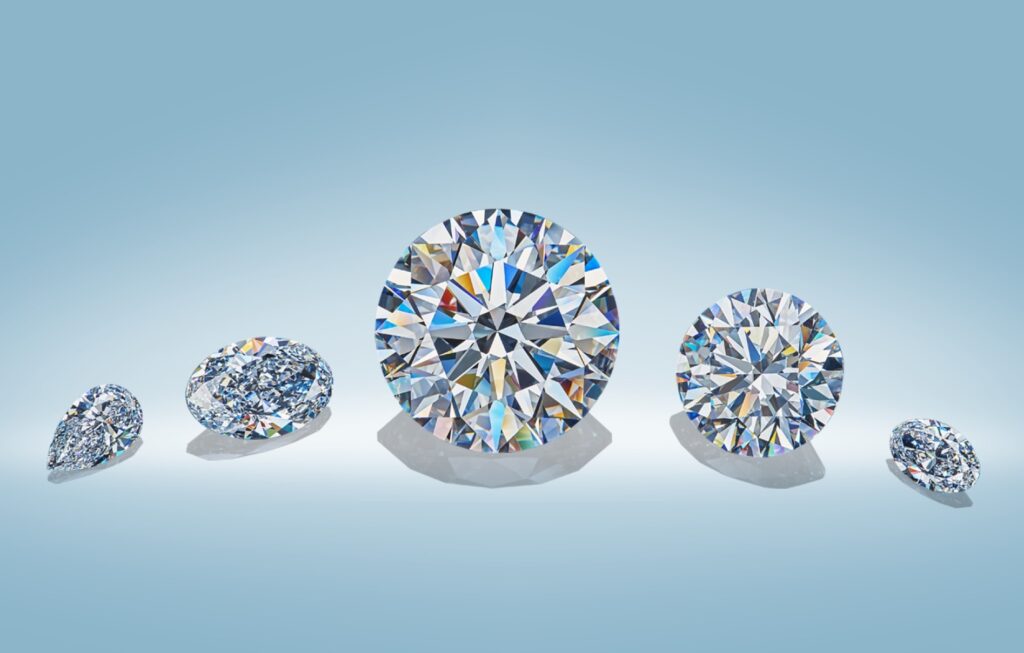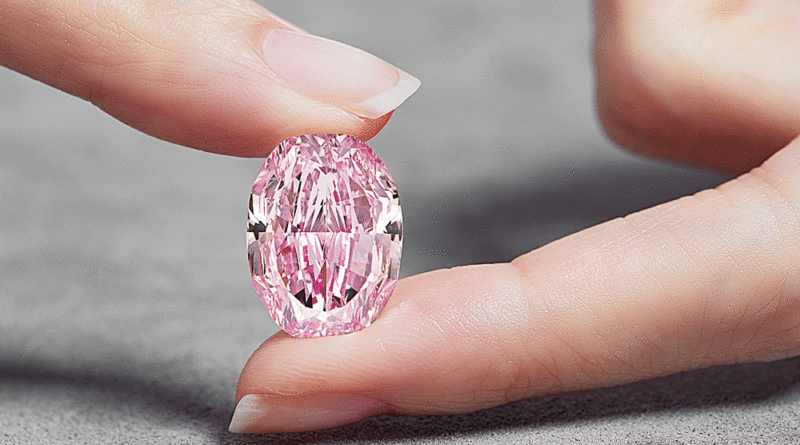Pink diamond sells for $26.6M at Sotheby’s auction
GENEVA – The beautiful pink rock hit the block at Sotheby’s “Magnificent Jewels and Noble Jewels” sale in Geneva, Switzerland on Wednesday (11 November 2020) and was snapped up by an anonymous buyer, who placed the winning bid over the phone, Sotheby’s said.
The 14.8-carat diamond, dubbed “The Spirit of the Rose,” is the largest of its kind to be auctioned, as 99% of all pink diamonds are under 10 carats. It was one of three stones in a collection by Russian mining company Alrosa – all named after famous Russian ballets.
The diamond was mined in Russia and was named ‘The Spirit of the Rose’ after a ballet performed by the Ballets Russes and its legendary dancer Vaslav Nijinsky. Its size, along with its colour and flawless internal structure, helped to attract the high price at Sotheby’s in Geneva.
The gem, which was the largest of its kind to come to auction, failed to reach its high estimate of $38 million yet still set a record auction price for a purple-pink gem, according to Sotheby’s. Bidding opened at $16 million and climbed to the final hammer price of $21 million, plus commission.
This is no ordinary rock. The sheer size and flawless internal structure of “The Spirit of the Rose” renders her quite unique. The stone was cut from the largest pink rough ever mined in Russia. “Nijinsky,” which was named after a ballet featuring dancer and choreographer Vaslav Nijinsky, was unearthed by the Alrosa mine from the Ebelyakh deposit in the Republic of Sakha (Yakutia) in the northeast of the country back in 2017. It weighed an incredible 27.85 carats before it was cut.
“The Spirit of the Rose caught the imagination of everyone who had the chance to see it,” Benoit Repellin, Head of Sotheby’s Geneva ‘Magnificent Jewels’ auction, said in a press release. “It fully deserves the price achieved tonight, which is also a testament to the growing appreciation, and awareness of the great scarcity of pink diamonds around the world.”
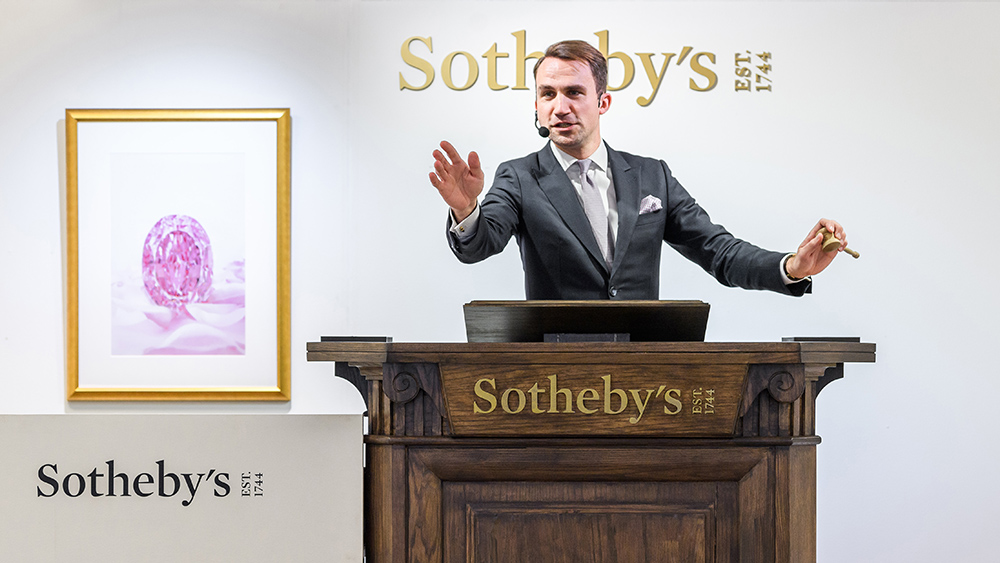
BACKGROUND TO THE NAME
The ‘Ballets Russes’ allowed Europe and the rest of the Western world to discover the genius and talent of Russian dancers and choreographers at the beginning of the 20th century. This itinerant ballet company was based in Paris and performed between 1909 and 1929 throughout Europe and toured North and South America as well.
Conceived by impresario Sergei Diaghilev, the Ballets Russes is regarded as the most influential ballet company of the 20th century and promoted artistic collaborations among choreographers, composers, designers, dancers, and the fashion industry.
The high standards of its dancers, classically trained at the Imperial Schools, were noticed by the Western world. The Ballets Russes considerably raised the status of the male dancers; the most popular and talented in the company’s history was the legendary Vaslav Nijinsky.
The rough diamond, from which the ‘Spirit of the Rose’ was cut, was named ‘Nijinsky’ upon its discovery in July 2017 in Yakutia, in the northeast of Russia. A legendary name befitting for a wonder of nature, a stunning 27.85 carat pink rough diamond.
The name of the faceted diamond itself, ‘The Spirit of the Rose’, is the title of the most famous ballet performed by the Ballets Russes and for which Nijinsky is universally known and recognised. It was written by Jean-Louis Vaudoyer who based the story on a verse by the 19th century French poet Theophile Gautier.
The ballet premiered in Monte Carlo on 19 April 1911. It depicted a young girl, performed by Tamara Karsavina, who, after returning from her first ball, fell asleep and dreamt that she was dancing with a rose, personified by Nijinsky.
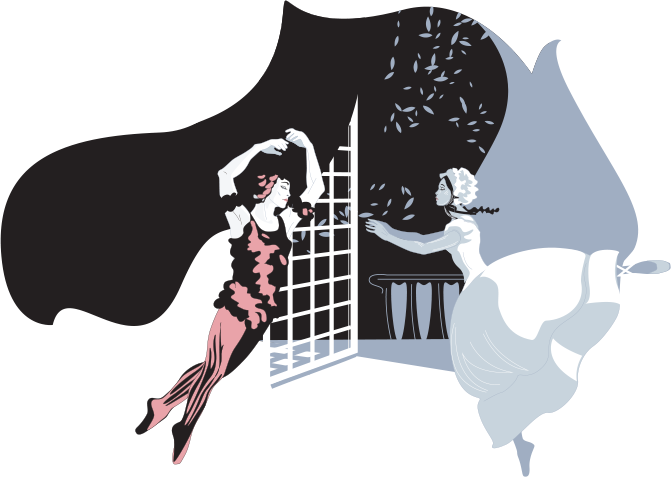
It was a tremendous success, and Nijinsky’s spectacular leap through a window at the end of the performance became legendary, as well as his costume, which was designed by Leon Bakst. The elastic silk was covered with silk rose petals into which Nijinsky was sewn before every performance.
The wardrobe mistress had to touch up the petals with her curling iron. It is said that the dancer’s servant, Vasili, collected the petals that fell to the stage floor and sold them as souvenirs and that the profit allowed him to build a house.
Le Spectre de la Rose (the French title for The Spirit of the Rose) was one of the most loved productions of the Ballets Russes and Europe and America discovered Russian folklore through the representations of the Ballets. They drove the imagination and inspiration of fashion and jewellery designers. Coco Chanel was one of the costume designers of the Ballets Russes.
The Ballets Russes illustrated the links between the arts, history, jewellery, beauty and fashion. The Spirit of the Rose is the ideal name for a stone which reflects beauty and mystery; a diamond for which the magnificence and the grandeur of Russia were fully unveiled by the cutter who brought out its inner and magical beauty.

COLOURED DIAMONDS
Pink diamonds were first discovered in India during the early 17th century, in the Kollur mine within the Guntur district of Andhra Pradesh, which was part of the legendary Golconda kingdom. Jean-Baptiste Tavernier, a French merchant and adventurer, first made a reference to pink diamonds around this time.
In his travel book, Tavernier mentioned a very large pink rough diamond weighing over 200 carats, shown to him by Moghuls in the Kingdom of Golconda in 1642. This diamond, named ‘The Grand Table’ was valued at 600,000 rupees at the time, and is still considered to have been the largest pink diamond recorded to date.
Since their discovery in the early 17th century, pink diamonds have also been mined in Brazil, South Africa, Tanzania, Canada, Australia and, of course, Russia.
It is thought that around 80% of the world’s pink diamonds now originate from the Argyle mine in Kimberley, Western Australia (the mine closes for good this year). Out of the mine’s 20 million carat annual output, only 0.1% are classified as pink diamonds, attesting to their rarity.
Unlike white diamonds, coloured diamonds obtain their hues from chemical disturbances in the earth during their formation process. The varied colours originate from trace elements that interfere with the carbon crystal formation within the diamond.
For example, the presence of nitrogen creates yellow diamonds, and boron forms blue diamonds. Curiously, there are no trace elements found in pink diamonds. Instead, the cause of the pink hue is thought to be caused by a distortion in the diamond’s crystal lattice, created by intense heat and great pressure after the stone’s formation in the earth.
This distortion displaces many carbon atoms from their normal positions and alters the qualities of light reflected by the diamond – resulting in us observing the stone as pink. As with other coloured diamonds, pink diamonds are graded on their colour by the Gemological Institute of America using the classing: Faint, Very Light, Light, Fancy Light, Fancy, Fancy Intense, Fancy Vivid. Similarly, to other coloured diamonds, Fancy Vivid is the most sought-after colour.
Given their rarity, it is unsurprising that the value of pink diamonds has increased considerably over the centuries. The current record for a pink diamond sold at auction is held by the ‘CTF Pink Star’, a 59.60-carat oval mixed-cut Fancy Vivid Pink, Internally Flawless diamond which was auctioned at Sotheby’s Hong Kong in April 2017 for $71.2 million USD.
DIAMOND MINING
‘Over the centuries, diamonds that are principally pink have been recovered from only a handful of localities around the world, and this event is so uncommon that any discovery is noteworthy. Although they can be found in both primary deposits (kimberlite or lamproite pipes) and secondary deposits (riverbeds and ocean floor), crystals with a predominantly pink hue are rare finds:
‘Since the late 1980s, the Argyle mine, in a remote part of northwestern Australia, has been the only consistent source of pink diamonds. Fewer than 10% of the annual rough production from this mine weigh more than 0.20 ct, and the yearly output of pink diamonds could fit in the palm of one’s hand. Put into perspective, only one carat out of every million carats that the mine produces is considered suitable for sale as a pink or red gem.’
‘Russia is also an intermittent source of pink diamonds, and currently the world’s largest diamond producer by volume, responsible for around 30% of the world’s diamond output each year. In 2015 alone, 41.9 million carats of diamonds were mined in Russia.’
Excerpts from the GIA monograph
Although diamonds had been found in various locations around Russia for more than 150 years, the prospect of commercial mining in the territory was first investigated in 1938 by scientists at the Leningrad State University. They compared the geology of the Soviet Union with the diamondiferous regions around the world.
In June 1954, Larisa Popugaeva a Soviet geologist discovered a kimberlite surface, later called the Zarnitsa mine in Yakutia. The following year, another 10 pipes were opened in the area. Mir was the first diamond mine developed in Russia.
The country’s most productive diamond mine by volume was discovered a few years later about 400 kilometers north of Mir. Polished Russian diamonds started to appear in the late 1960s. By the 1980s, an estimate of 25% by value originated from Russian mines. The name Yakutia changed to Sakha Republic after the Soviet Union was dissolved.
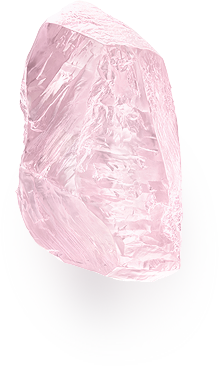
CUTTING & POLISHING ‘THE SPIRIT OF THE ROSE’
Unearthed in July 2017 from the Ebelyakh deposit in the Republic of Sakha (Yakutia) in the northeast of Russia, The Spirit of the Rose is the largest pink crystal ever mined in Russia. A miraculous pink crystal weighing 27.85 carats.
It took a whole year for Russian cutting masters to turn a unique diamond, discovered in Yakutia, into a genuine treasure with Very Good and Excellent symmetry and polish characteristics. The oval shape ensured that the diamond would be of the maximum possible size.
The proficient ballet dancer who played the part of the mysterious nocturnal visitor embodying the Spirit of the Rose; Vaslow Nijinsky gave his name to the rough diamond. The Spirit of the Rose was Nijinsky’s last performance on stage.
‘The Spirit of the Rose diamond has been fashioned as an oval modified brilliant. The Nijinsky rough diamond was itself somewhat elongated, so the diamond cutter likely chose the oval shape to preserve the greatest amount of weight.
If this is the case, the cutter sacrificed nothing in terms of colour, as the resulting gem is superbly vivid. A brilliant cut stone typically combined triangular and kite-shaped facets on the crown; this shape is described as modified as the decision was made to add in two rows of parallel steplike facets near the girdle edge, further customizing the dazzling effect of the diamond. In the fashioning process, the cutter also earned an Excellent polish and Very Good symmetry grade.’
Excerpt from the GIA monograph
The work was carried out at Alrosa’s factory in Moscow. The finished product sold in Geneva represented Russia’s most expensive diamond, according to Alrosa.

OTHER RECORD-BREAKING COLOURED GEMS
In May 2016, a large diamond known as the Oppenheimer Blue set a new auction record, reaching a price of $50.6m. The 14.62-carat gem was sold after 20 minutes of phone bidding at Christie’s auction house in Geneva. The buyer’s identity is unknown.
The Blue Moon, a 12.03-carat ring-mounted blue diamond, caught the eye of Hong Kong tycoon Joseph Lau in November 2015, who paid a record $48.4m for the cushion-shaped stone. He bought it for his seven-year-old daughter, renaming it the “the Blue Moon of Josephine” after her.
In May 2015, an anonymous buyer made history after purchasing the Sunrise Ruby, a 25.59-carat “pigeon blood” coloured gemstone, for $30m. At that price, it became the world’s most expensive precious stone other than a diamond.
The “largest vivid orange diamond in the world”, according to Christie’s, attracted the highest price paid per carat for any diamond at auction, selling for $35m, or $2.4m per caratin November 2013.
In November 2010, the Graff Pink, a 24.78-carat “fancy intense pink” stone described as “one of the greatest diamonds ever discovered”, auctioned for $46.2m. At the time it was believed to be the most expensive gemstone bought at auction and was sold to the well-known British dealer Laurence Graff.
